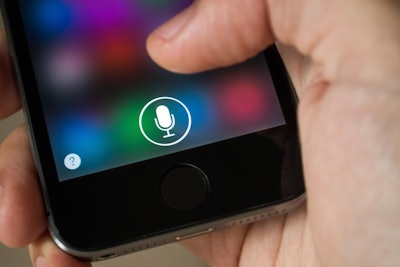
Imagine you could snap your fingers and have your favorite pizza show up in front of you. With virtual assistants, consumers are making a big jump closer to that reality. In November, Amazon allowed online shopping from the Echo, which was a big win for customer convenience—but it fuels uncertainties about how e-commerce will change in the near future. Research shows that four out of five mobile users rely on their smartphones to shop. With more of these shoppers adopting voice search to complete online tasks, even those without home automation hubs like the Echo will likely make the transition to voice command shopping in the near future. And that’s going to have an effect on how we do business. But here’s what you need to know about the impending voice command revolution.
Voice Command Represents a Massive Shift for E-Commerce
On one hand, personal assistants open up new sales channels and the ability to capitalize on contextual commerce. With Amazon’s range of instant or near-instant delivery services, there’s no need to keep a sticky note on the fridge reminding you that you need paper towels. You just tell Alexa to order you some.
But that change also means that there’s less opportunity for browsing and accidental discovery. How can customers find your product if they don’t even have to look? Both search engine optimization (SEO) and advertising campaigns will need to be adapted for the platform, with every effort carefully backed by data. And marketers and sales teams will need to up their game as well, to create content that melds well with the new ecosystem.
In general, voice command shopping has these unique characteristics:
- It narrows results. Typically, shoppers use the voice command feature to save time. Sixty-three percent of adults and 72 percent of teen users told Google that they think voice searching makes them more efficient. If a customer asks their device for “best microwave for under $300,” they’re looking for a single result, not a string of answers. Getting your product at the top of the list won’t just be good for business, it may just become a market imperative. Similarly, searches are a lot more likely to be tailored to a user’s unique set of needs and circumstances. So a user might search “window replacements in my area” or “get me tickets to the Radiohead show at Merriweather Post Pavilion.” That underscores the importance of using data to gain a more complete picture of your customer’s needs and how your most powerful consumer base lives.
- It’s more likely to mimic natural speech patterns and question formats. This is a no-brainer, but it’s important to repeat because it may mean an adjustment in your marketing materials. For instance, you may want to change taglines and brand mottos so that they mirror natural speech patterns. ProductsUp, for instance, suggests tailoring brand taglines to phrases that answer a question, for instance, “The best fleece-lined leggings are ______.” That way, they’ll be more likely to appear in results.
In general, the more you can break down consumer demographics into the most minute categories, the better off you will be—especially if you recast your branding with speech-friendly text.
Many Deals and Campaigns Will Have to Be Negotiated through Seller Platforms
To celebrate the launch of the Echo’s voice command shopping feature, Amazon listed several “Alexa-only” deals exclusively to customers who accessed Alexa’s new ability. It’s now a regular feature for Echo owners. Users can ask Alexa to list today’s deals, giving them the chance to mirror more traditional browsing. That means that it will increasingly be Amazon (or Google or maybe even Apple’s Siri if predictions of an Apple home automation system come to fruition) who steers and dictates what customers see, even when they’re not shopping for a specific item.
It also suggests that product ratings and listings will be even more important than they are now. Whatever else an item may be, it will be crucial to nail listings, headlines and other metadata in order for it to be easily searchable via voice command. Additionally, companies may need to leverage contacts with Amazon representatives in order to have items featured in special campaigns, so professional presentation and brand presence on the site will be all the more important. Amazon also gives preference to products that ship with Prime when users order through voice command, so integrating with Amazon’s Fulfillment Services may make the difference in this market.
It’s Also More Popular among Younger Demographics
Teenagers, in large part, are driving the conversion to voice command shopping, since they’re vastly more likely to use voice command assistants throughout the day to perform regular online tasks. A 2014 Google Mobile Voice Study showed that 55 percent of teens use voice search at least once a day and 89 percent agree that personal assistants are the future.
But voice search is gaining popularity across all demographics, too. Newer research from Google reveals that, currently, about 20 percent of all queries are mobile voice searches, a number that’s growing if surveys from MindMeld, a third-party voice assistant provider, are to be believed. Its information showed that over 40 percent of respondents just came to voice search and voice commands within the past six months (for context, these results were published in December 2015), whereas just under 20 percent started using voice search between six months to a year before the time of the survey. Other projections show voice search as encompassing around 50 percent of search queries by 2020.
And contextual commerce isn’t going away anytime soon. With augmented reality and virtual reality coming into the fold, e-commerce will have to make significant transitions in the near future just to keep up with emerging technology. But where there are challenges, there are also opportunities to make shopping easier and more hands-free. It’s a new landscape for digital commerce, for certain—but it will be green pastures for those businesses that can make consumers’ new shopping habits work in their favor.















